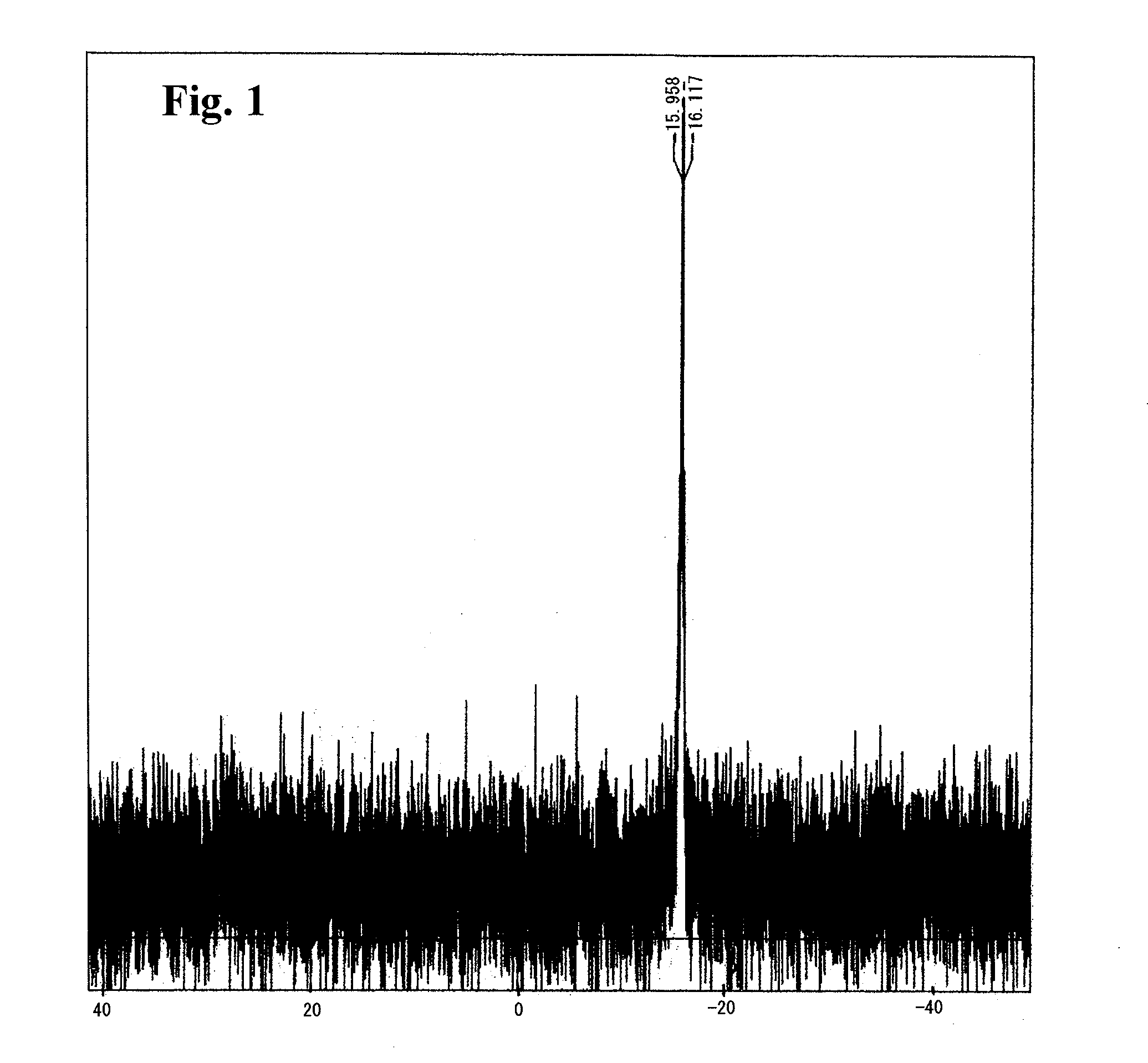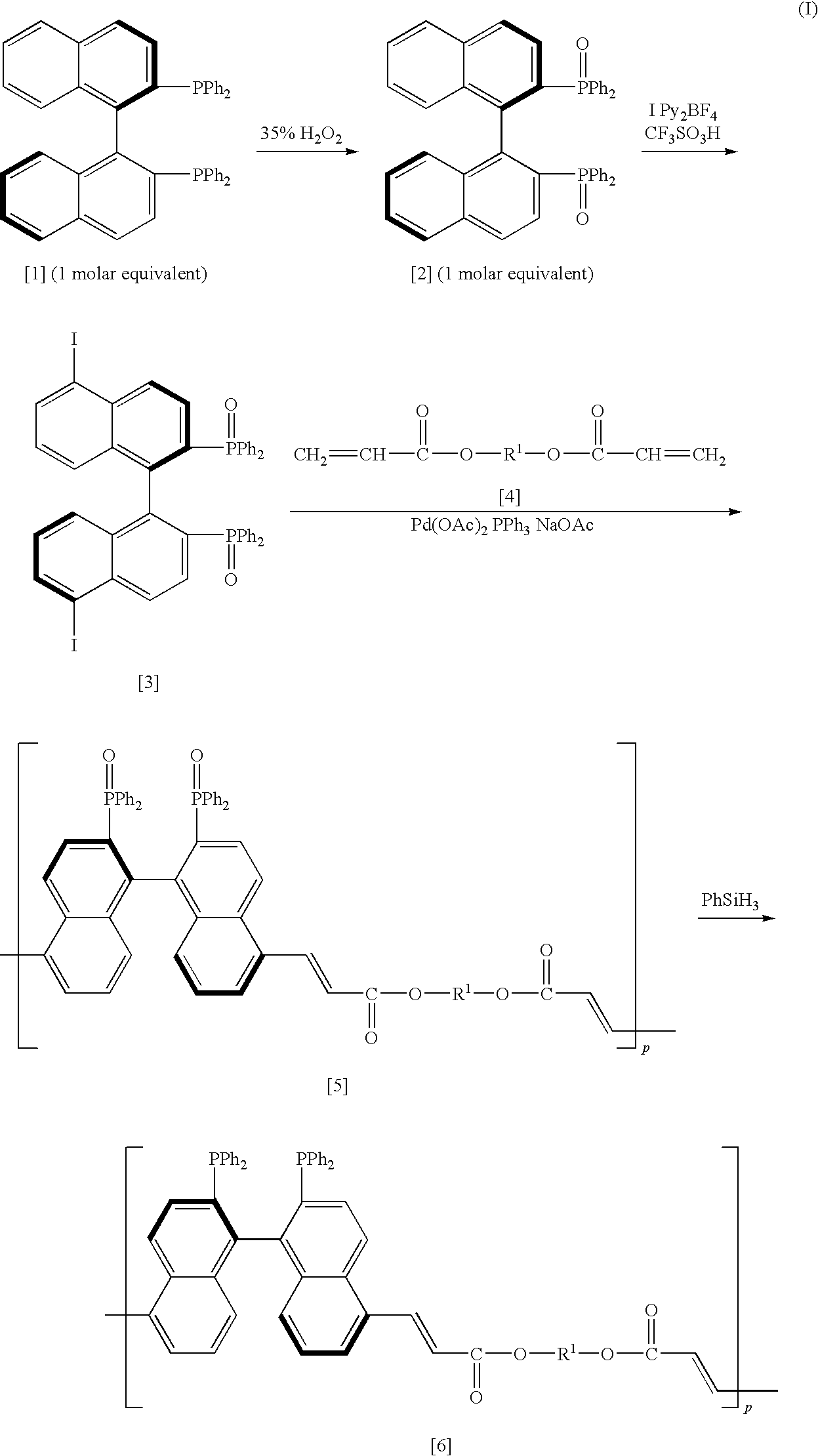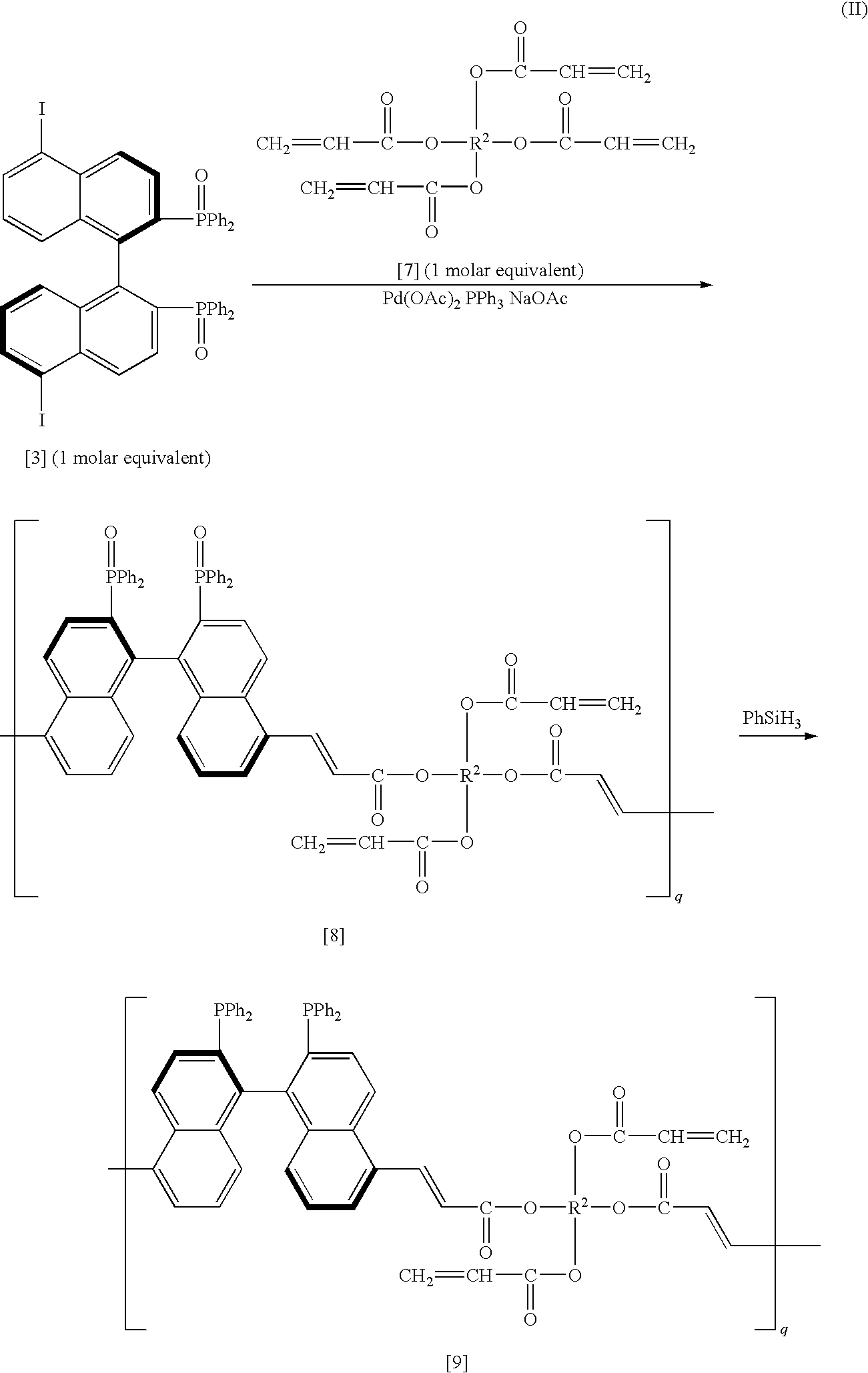Polymer having bis(diphenylphosphino)binaphthyl groups
- Summary
- Abstract
- Description
- Claims
- Application Information
AI Technical Summary
Benefits of technology
Problems solved by technology
Method used
Image
Examples
preparation example 1
[0072]As shown in the chemical reaction formula (I), according to the procedures disclosed in Toyoshi Shimada et al., The Journal of Organic Chemistry, 66, p 8854-8858 (2001), 1 molar equivalent of (R)-BINAP was oxidized with 20 molar equivalents of 35% hydrogen peroxide aqueous solution in acetone, and after a small amount of manganese dioxide was added thereto, the suspension was filtered. The filtrate was extracted with chloroform, and it was washed with sodium hydrogen carbonate aqueous solution. It was dried over anhydrous magnesium sulfate, and then the solvent was evaporated under reduced pressure. The residue was purified by silica gel column chromatography, and (R)-BINAP dioxide of 92% yield was obtained. Then, according to the procedures disclosed in Toyoshi Shimada et al., The Journal of Organic Chemistry, 70, p 10178-10181 (2005), in the presence of 6 molar equivalents of CF3SO3H, the obtained (R)-BINAP dioxide was reacted with 3 molar equivalents of IPy2BF4 in methylene...
preparation example 2
[0078]After a 5,5′-diiodide of the (R)-BINAP dioxide (1.0055 g, 1.11 mmol) obtained similarly to Preparation Example 1, palladium acetate (7.4 mg, 0.033 mmol) and triphenylphosphine (34.9 mg, 0.133 mmol) were replaced to a nitrogen atmosphere, they were dissolved in 100 mL of DMF, and it was stirred at room temperature for 5 minutes. Then, sodium acetate (182.1 mg, 2.22 mmol) and LIGHT ACRYLATE DCP-A (trade name of Kyoeisha Chemical Co., Ltd.) of dimethyloltricyclodecane diacrylate were added thereto, and it was stirred at 130° C. for 50 hours. After the reaction, DMF was evaporated under vacuum, and a crude product was washed with methanol. Then, a polymer having the (R)-BINAP dioxide group (19) (984.6 mg, 90%) represented by the following chemical formula was obtained.
[0079]After the obtained polymer having the (R)-BINAP dioxide group (19) (501.9 mg, 0.508 mmol) was replaced to a nitrogen atmosphere, phenylsilane (3.1 mL) was added thereto, and it was stirred at 120° C. for 63 hou...
preparation example 3
[0081]After a 5,5′-diiodide of the (R)-BINAP dioxide (300.8 mg, 0.332 mmol) obtained similarly to Preparation Example 1, palladium acetate (2.2 mg, 0.01 mmol) and triphenylphosphine (10.5 mg, 0.04 mmol) were replaced to a nitrogen atmosphere, they were dissolved in 30 mL of DMF, and it was stirred at room temperature for 5 minutes. Then, sodium acetate (54.5 mg, 0.664 mmol) and LIGHT ACRYLATE 1.9ND-A (trade name of Kyoeisha Chemical Co., Ltd.) of 1,9-nonanediol diacrylate (92.8 mg, 0.346 mmol) were added thereto, and it was stirred 130° C. for 50 hours. After the reaction, DMF was evaporated under vacuum, and a crude product was washed with methanol. Then, a polymer having the (R)-BINAP dioxide (21) (280.9 mg, 89%) represented by the following chemical formula was obtained.
[0082]The obtained polymer was reduced similar to Preparation Example 1 or 2, and then the desired polymer having the (R)-BINAP group was obtained. Incidentally, u in the chemical formula (21) represents a number ...
PUM
 Login to view more
Login to view more Abstract
Description
Claims
Application Information
 Login to view more
Login to view more - R&D Engineer
- R&D Manager
- IP Professional
- Industry Leading Data Capabilities
- Powerful AI technology
- Patent DNA Extraction
Browse by: Latest US Patents, China's latest patents, Technical Efficacy Thesaurus, Application Domain, Technology Topic.
© 2024 PatSnap. All rights reserved.Legal|Privacy policy|Modern Slavery Act Transparency Statement|Sitemap



